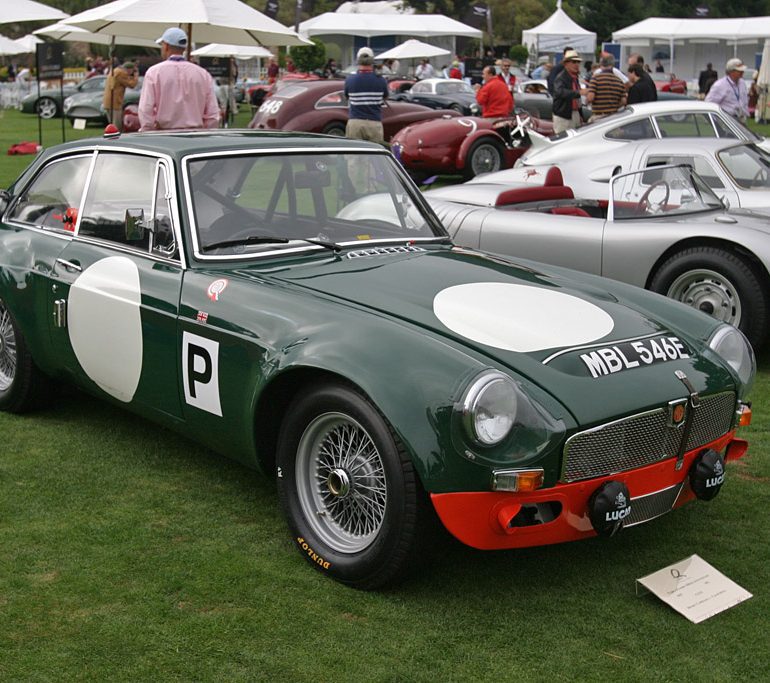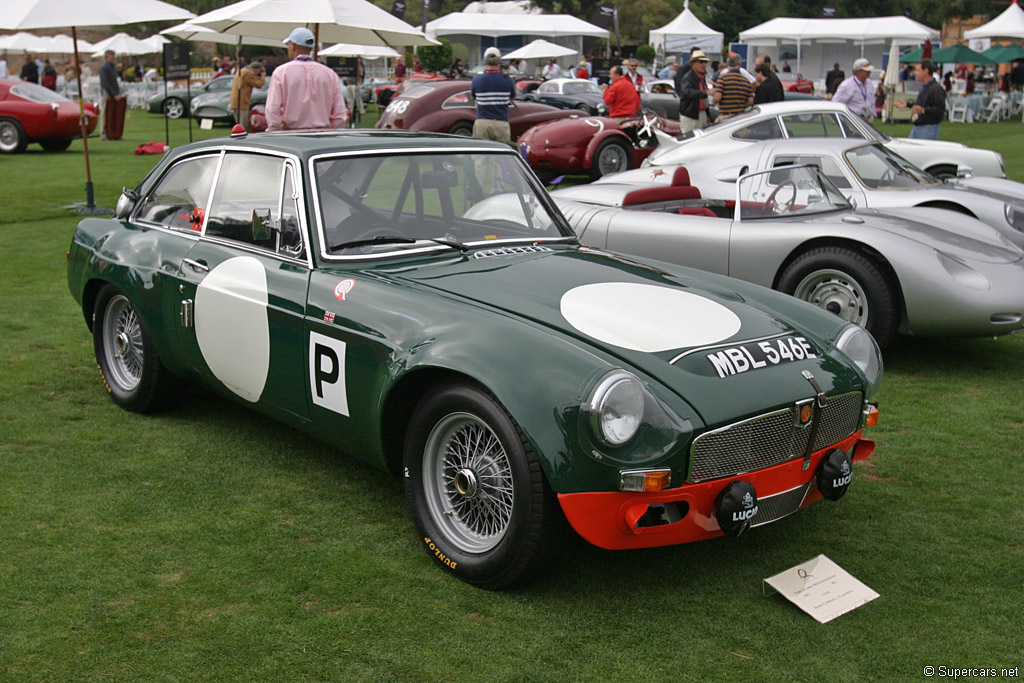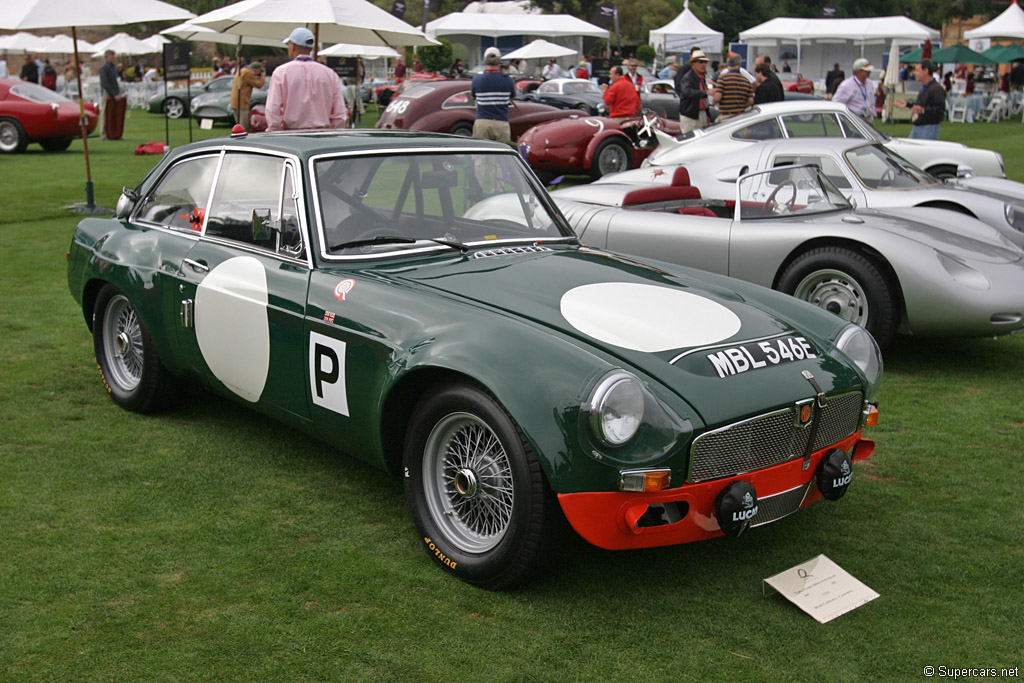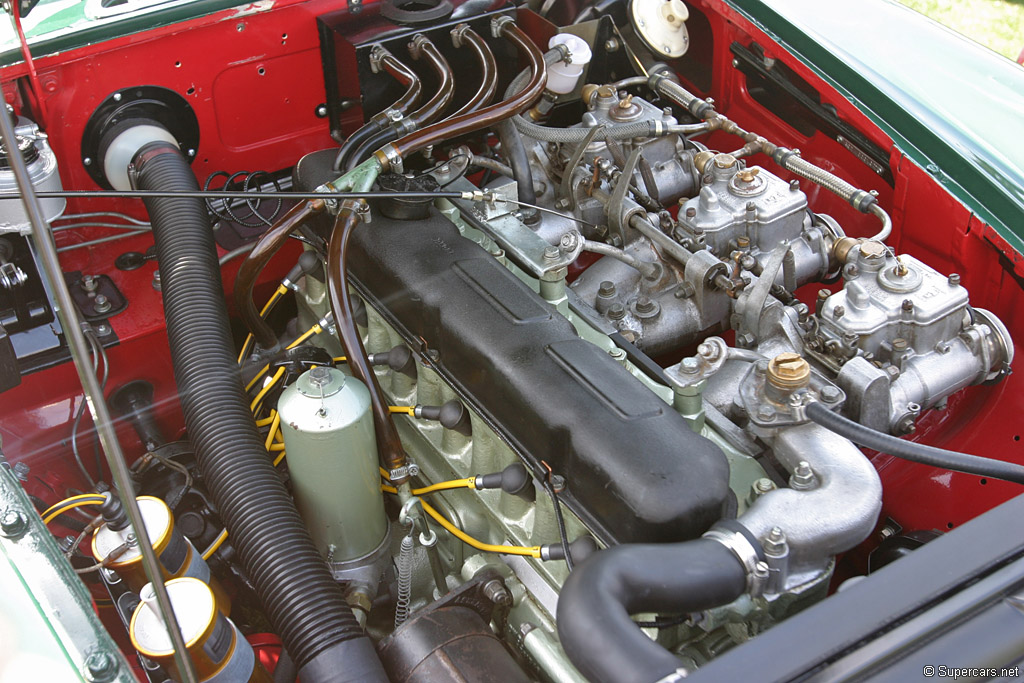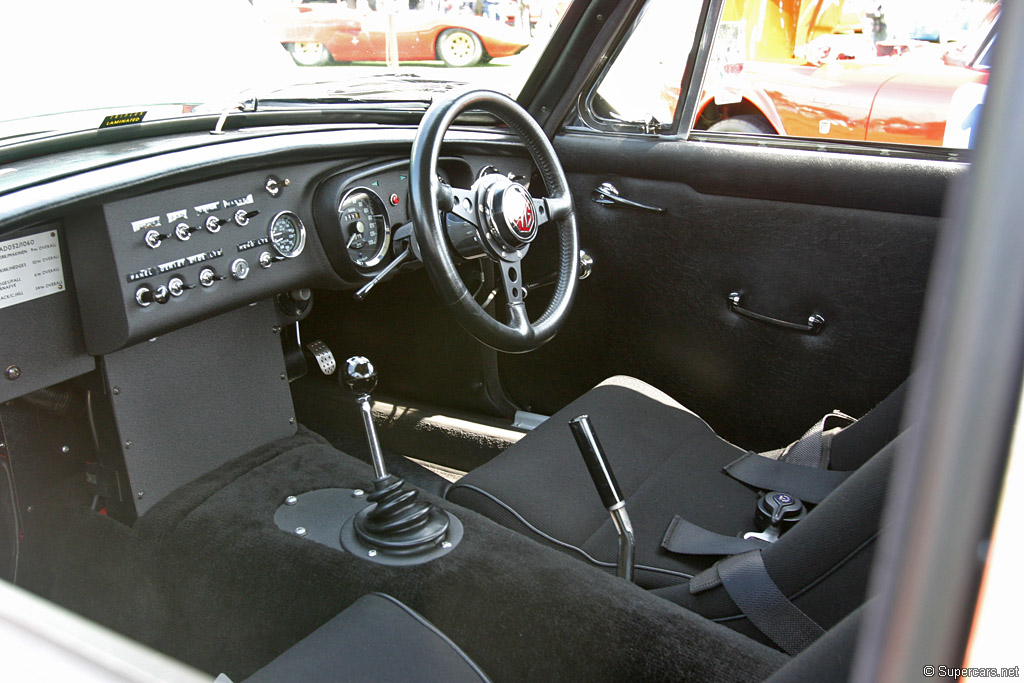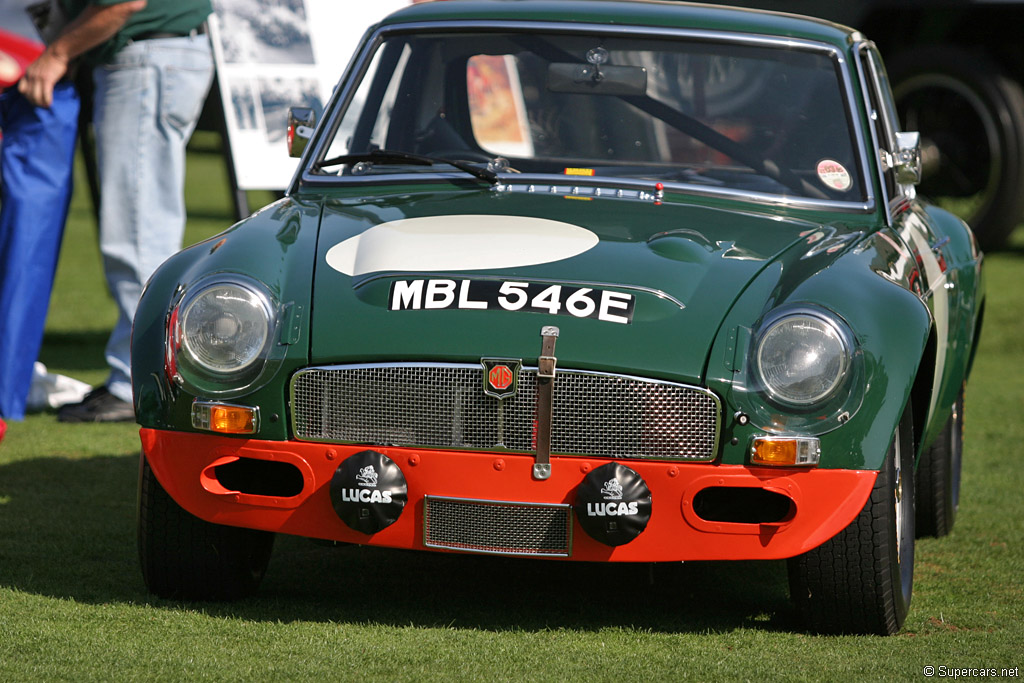1964 MG C GTS
Built in between the transition from MGB to MGC, the GTS is a hybrid of both models used to race events like Sebring and the Targa Florio. It was built under the Group 6 prototype regulations which allowed for a considerable amount of modifications. “The objective of the GTS was to produce a rallycar to take over from the Mini-Cooper“¹
BMC began by working on a new engine to suit the 2-liter class. To save weight an aluminum block was tested but never raced. When the MGC was launched the GTS was upgraded with its inline-6 engine and characteristic bonnet bulge. These were fitted with an aluminum alloy cylinder head that had provisions for triple Weber carburetors.
The bodies used the standard MGB GT steel structure with aluminum-alloy skins with substantial fender flares.
The first of the GTS-spec MGs, MBL546E, appeared at the 1967 Targa Florio, but since the MGC wasn’t officially announced it used the a special 2004cc engine and was built-up from standard MGB chassis. The body used aluminum-alloy outer panels over the unitary steel MGB monocoque having the GHD3 prefix. Like all BMW Works cars, the cars were painted red, but the officials at the Targa Florio ordered them to be green so a hastily paint job was done before the race.
The first of the GTS-spec MGs, MBL546E, appeared at the 1967 Targa Florio, but since the MGC wasn’t officially announced it used the a special 2004cc engine and was built-up from standard MGB chassis. The body used aluminum-alloy outer panels over the unitary steel MGB monocoque having the GHD3 prefix. Like all BMW Works cars, the cars were painted red, but the officials at the Targa Florio ordered them to be green so a hastily paint job was done before the race.
When the MGC was officially launched in October of 1968, MBL546E was upgraded to MGC spec with a 2.9-liter aluminum six-cylinder engine. In this MC configuration, it contested the 1967 Sebring 12 Hours and finished 10th overall with Paddy Hopkirk and Andrew Hedges at the wheel. It was joined by RMO699F, another GTS which probably used an MGC chassis a the Marathon de la Route at Nürburgring.
In 1969 both cars were entered in the 12 Hours of Sebring where RMO699F finished 15th overall as driven by Paddy Hopkirk and Andrew Hedges.
Sources & Further Reading
In Detail
| tags | mgc |
| submitted by | Richard Owen |
| type | Racing Car |
| built at | Abingdon, England |
| coachbuilder | Bodies Branch |
| production | 2 |
| engine | Inline-6 |
| position | Front, Longitudinal |
| aspiration | Natural |
| block material | Aluminum Alloy |
| displacement | 2900 cc / 176.97 in³ |
| body / frame | Alloy Outer Panels over GHD3 Unitary Steel Monocoque |
| driven wheels | RWD |


